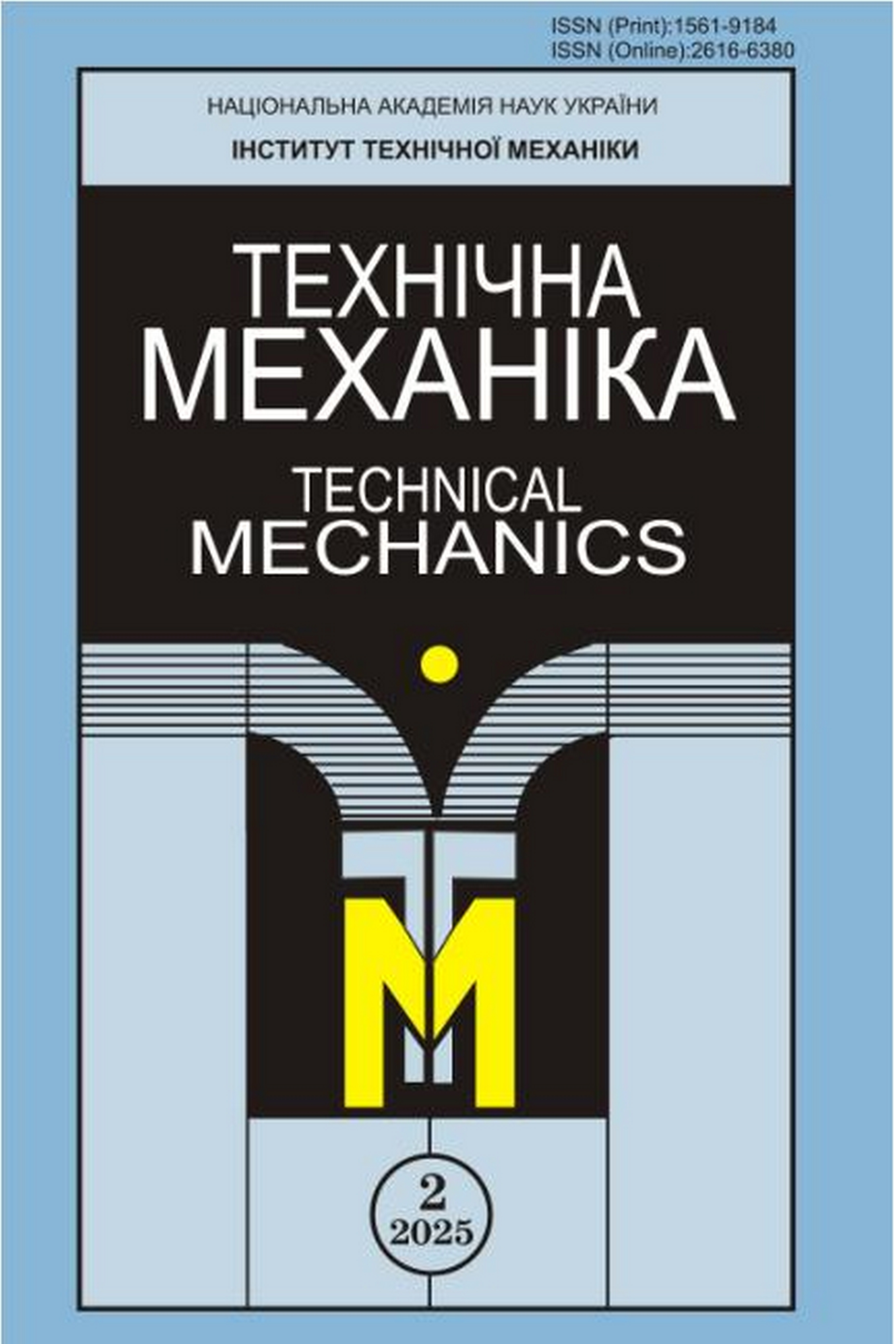VERIFICATION OF A FINITE-ELEMENT MODEL OF A HORIZONTAL SHELL STRUCTURE – SUPPORT CONTACT
Keywords:
shell, tank, simulation, support, pressure, finite element, contact, Winkler model.Abstract
DOI: https://doi.org/10.15407/itm2025.02.063
This article addresses the finite-element simulation of a horizontal steel tank with a volume of 50 m3, which rests on two concrete supports and is subjected to static loads. The structure has a cylindrical wall with a length of 8.15 m and a radius of 1.4 m. The thickness of the cylindrical wall is 0.005 m. The model is presented in axisymmetric form; the stress and strain field of the cylindrical wall is investigated, and the contact zone of the stiffener – shell – support system is analyzed at different values of the difference in radius between the cylindrical shell and the support under hydrostatic pressure. A geometric and a finite-element model of the tank with detailed contact zones are presented. Three-dimensional elements (SOLID186) and spatial shell elements (SOLID186) (SHELL281) are used in the axisymmetric simulation of the shell structure and the support in a three-dimensional formulation. The contact zone is simulated using spatial contact finite elements to represent the movable surface on the shell side and the stationary surface on the stiff base side. The stiffeners are simulated using three-node beam elements. The contact finite-element model is verified using the Winkler model, in which the radial contact pressure is assumed to be proportional to the radial displacements of the contact surface. The stiffener bending under complex local loading is determined using the Fourier method, according to which all functions that define the forces acting on the structure and its stress and strain field are approximated using a Fourier series in the angular coordinate. The infinite system that relates the radial displacements of the stiffener to the external loads is reduced and replaced with a finite one. To determine the contact pressure distribution, the system is solved, and the actual contact pressure is found using the equation p = -c∙w where w is the radial displacement of the contact surface, and c is the stiffness of the base. The verification is made by comparing the contact pressure distribution obtained by the numerical simulation with that found using the Winkler model. The discrepancy does not exceed 16%, thus indicating the adequacy of the finite-element model. The contact zone is analyzed for operating conditions where the difference in radius between the cylindrical shell and the support varies from 0 to 4 cm. The contact zone model of the stiffener – shell – support system is adequately described by the Winkler model for an elastic support.
REFERENCES
1. Gudramovich V. S., Demenkov A. F., Egorov E. A., Reprintsev A. V. On the effect of the production technique on the load-bearing capacity of steel reservoirs. Strength of Materials. 2006. No. 4. Pp. 125-131. (In Russian).
2. Brenner S. C., Scott L. R. The Mathematical Theory of Finite Element Methods. New York: Springer-Verlag, 2008. 400 pp.
https://doi.org/10.1007/978-0-387-75934-0
3. Demenkov A. F., Reprintsev A. V., Samarskaya E. V. Effect of in-production and in-service defects on the strength of vertical reservoirs for oil and oil products. Bulletin of Dnipropetrovsk University. 2006. No. 2/2. Iss. 10. Pp. 51 - 55. (In Russian).
4. Mossakovsky V. I.., Gudramovich V. S., Makeev E. M. Contact Interaction of Shell Structural Elements. Kyiv: Naukova Dumka, 1988. 288 pp. (In Russian).
5. Popov V.L. Contact Mechanics and Friction. Berlin: Springer, 2017. 391 pp.
https://doi.org/10.1007/978-3-662-53081-8
6. Mittelstedt C. Theory of Plates and Shells. Berlin: Springer, 2023. 579 pp.
https://doi.org/10.1007/978-3-662-66805-4
7. Hauck B., Szekrenyes A. Enhanced beam and plate finite elements with shear stress continuity for compressible sandwich structures. Mathematics and Mechanics of Solids. 2024. V. 29. No. 7. Pp. 1325-1363.
https://doi.org/10.1177/10812865231221992
8. Rabbat B.G., Russell H. G. Friction Coefficient of Steel on Concrete or Grout. Journal of Structural Engineering. 1985. V. 111. Iss. 3. Pp. 505-515.
https://doi.org/10.1061/(ASCE)0733-9445(1985)111:3(505)
9. Zhao W., Zhu B. Theoretical model for the bond-slip relationship between ribbed steel bars and confined concrete. Structural Concrete. 2018. V. 19. Iss. 2. Pp. 548-558.
https://doi.org/10.1002/suco.201700008
10. Wriggers P. Computational Contact Mechanics. Chichester: John Wiley & Sons Ltd, 2002. 441 pp.






